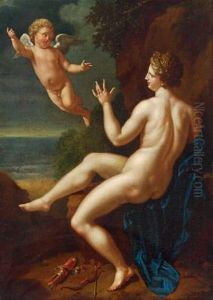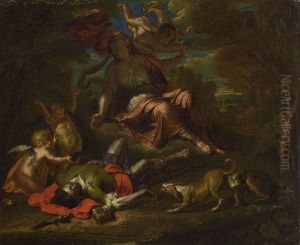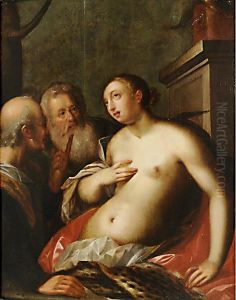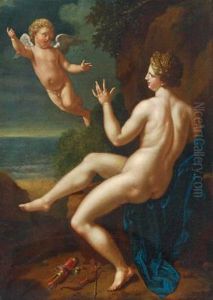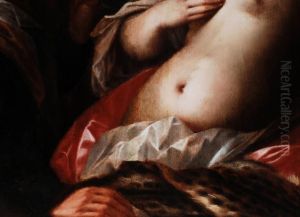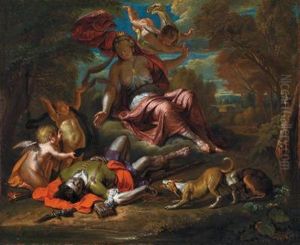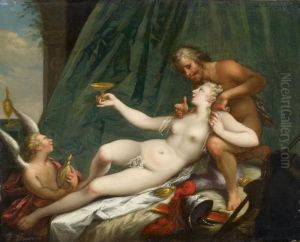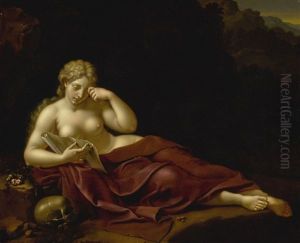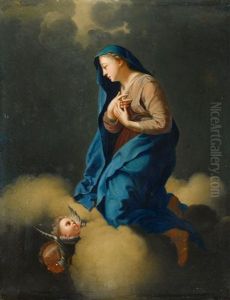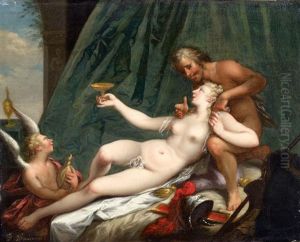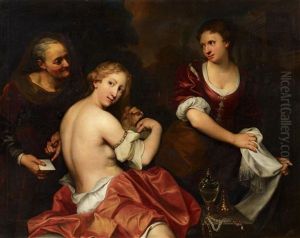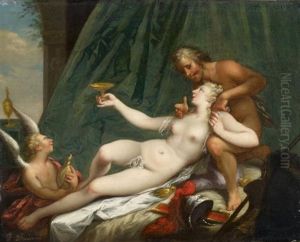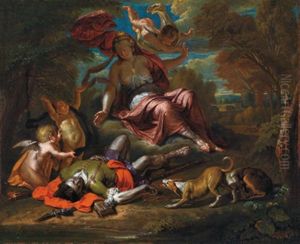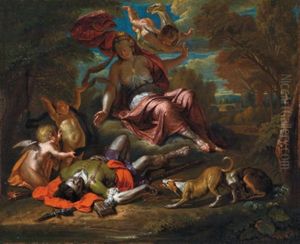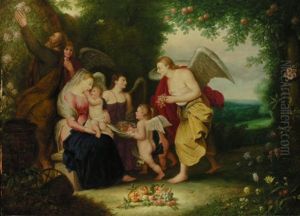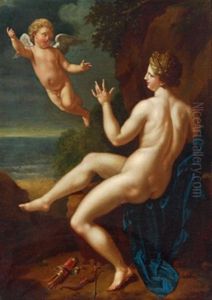Frans Bartholomeus Douven Paintings
Frans Bartholomeus Douven, also known as Frans Bartholomeus Douver, was a Dutch portrait painter born on December 15, 1674, in Roermond, which was then part of the Spanish Netherlands. He hailed from a family of painters, as his father was the artist Johann Douven. Frans Douven is primarily remembered for his work at the court of the Elector Palatine in Düsseldorf, Germany.
After receiving his initial training from his father, Douven went on to perfect his skills in the art capitals of Europe. His educational journey took him to Antwerp and Paris, and possibly to Rome, though the evidence of his Italian sojourn is not well-documented. In Paris, he was influenced by the French court painter Hyacinthe Rigaud, whose style is evident in Douven's elegant and sophisticated portraits.
In 1695, Douven was called to Düsseldorf by the Elector Palatine, Johann Wilhelm, also known as Jan Wellem, whose court was known for its grandeur and patronage of the arts. Douven became the court painter, a position he held until the Elector's death in 1716. During his time at the court, Douven painted portraits of the Elector, his wife Anna Maria Luisa de' Medici, and various European nobles and dignitaries who visited the court. His work was characterized by a refined use of color and a talent for capturing the opulence and decorum of the courtly environment.
Douven's portraits were not just mere representations; they were imbued with a sense of the sitter's status and character, and often included allegorical elements. He also painted genre scenes, though these are less known than his portraiture. His style contributed to the spread of the Baroque in the Lower Rhine region and influenced subsequent artists in the area.
After the death of Johann Wilhelm, Douven returned to his hometown of Roermond, where he continued to work until his death on March 26, 1727. His legacy lived on through his influence on later generations of painters and through the portraits that still hang in palaces and museums, serving as a window into the world of 18th-century European aristocracy.
